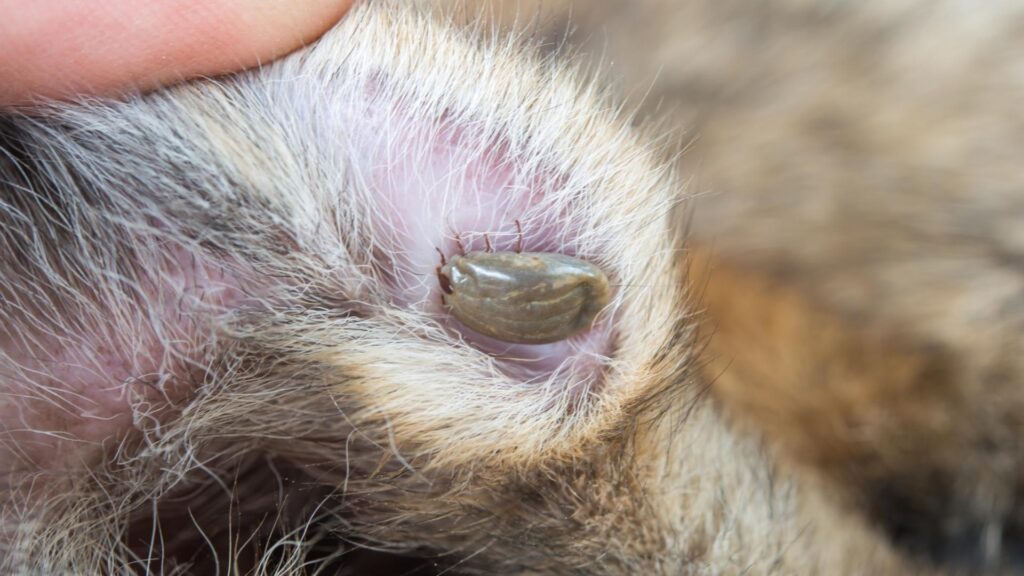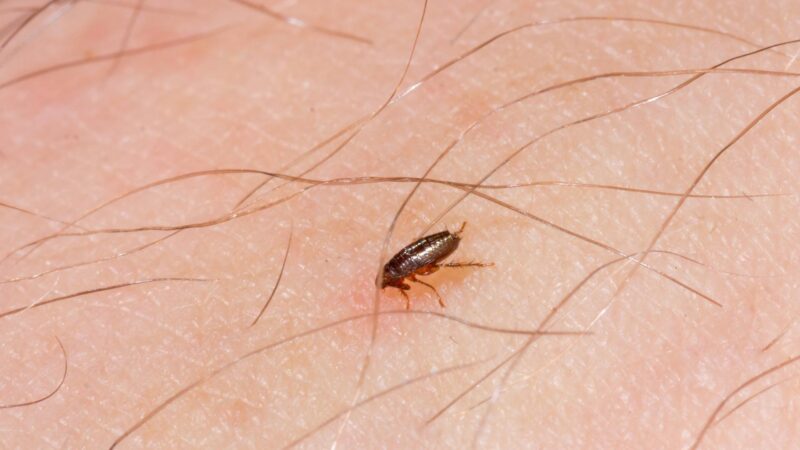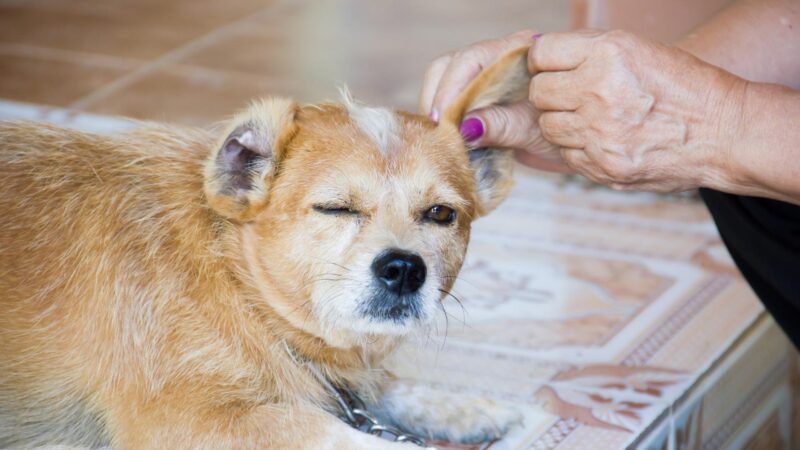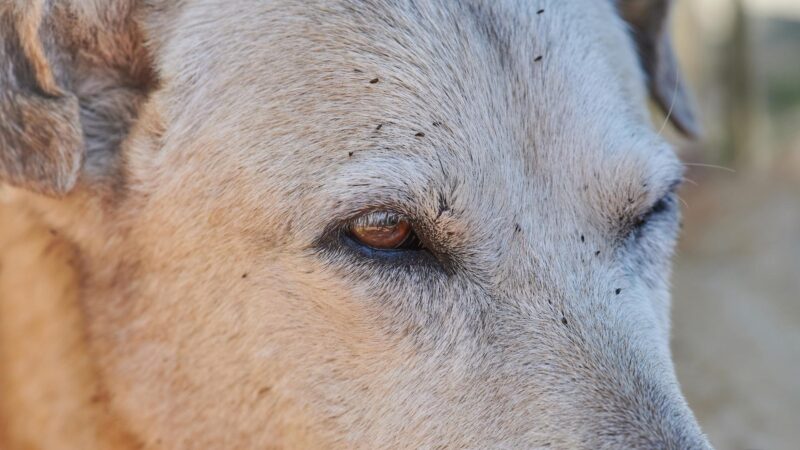Fleas are common external parasites of cats and dogs. These household pests also feed on the blood of other warm-blooded animals such as raccoons and squirrels.
Some fleas may be carrying pathogens that can cause human illnesses such as cat scratch disease (CSD). A flea infestation can also be hard to control.
Does one flea mean an infestation? Seeing one flea does not necessarily mean that there is already an infestation. But if that flea is on your pet dog or cat, there could also be other fleas hiding under the fur. You should inspect your pets very carefully even if you only see one flea on their bodies.
According to some estimates, pet owners in the United States are spending more than $1 billion annually in controlling fleas. Aside from that, a flea infestation can also occur in houses without pets.
So, if you want to know how fleas can infest your home and get rid of them, read this comprehensive guide from start to end.
Table of Contents
Is One Flea a Problem?

One flea is not a problem because you can easily kill it. But still, you should inspect the surrounding area to check if that flea has other companions. Do the checking again for the next few days.
If you don’t find any more fleas and your pets are not showing signs of having them, there is no reason for concern.
Can One Flea Cause Infestation?
One flea cannot cause infestation unless that flea is a female and has already laid eggs somewhere else. This is also why you should immediately check the surroundings, especially your pets.
Note also that fleas can also enter your house even if you don’t have pets since they can also use rodents as hosts.
Can One Flea Reproduce by Itself?

One flea cannot reproduce by itself. Just like other insects, fleas can only reproduce after mating. Fleas mate on their host, where they also feed and lay their eggs.
Females start to produce eggs 2 days after their first blood meal. Under ideal conditions, flea eggs can become adults within 18 and 30 days.
How Many Eggs Can One Flea Lay?
A single female flea lays between 20 and 50 eggs per day, depending on its food source. This is because females need to feed on fresh blood before they can produce eggs.
After feeding, they can lay an average of 1 egg per hour and will need to consume blood at about 15 times their body weight every day.
How Many Fleas Hatch From One Egg?
Like most insects, there is only a single flea hatch from one egg. Flea eggs usually hatch between 2 and 5 days but can reach up to 14 days if the weather is cold.
But since eggs are only laid on top of an animal’s fur, they usually fall on carpets, pet bedding, and furniture because pets cannot help but scratch them.
Can Humans Carry Fleas From One Home to Another?

Humans can carry fleas from one home to another, but it is very rare. Fleas will only move from their host animal to humans once food becomes scarce. Humans can get fleas mostly from areas where pets rest and sleep. It is also more likely that fleas will move from one home to another via infested carpets or pet beds.
Why Do Fleas Bite Me and No One Else?
Fleas rarely bite humans, but when they do, they usually bite the legs, feet, and ankles. There is no scientific study explaining the type of people that fleas prefer biting.
But since fleas prefer biting animals over humans because they have more hair, they could have chosen you over the others for the same reason.
Another possible reason is that your chemical makeup is more attractive than others. People also differ in exhaling carbon dioxide, which fleas can detect and choose the ones that are attracted to them.
Flea bites also cause different skin reactions, making them more noticeable to people who are allergic to flea saliva.
How Many Times Can One Flea Bite?
A single flea can bite its host animal about 10-15 times a day, depending on the area. Multiple bites by a single flea are mostly in rows and are not an indication that your pet is already infested by fleas.
Fleas are unlikely to move from one part of the body unless the animal will feel the itch and will scratch them off.
When Is Flea Season?

Fleas are present throughout the year, but summer is considered the flea season. These pet external parasites are most active during warmer months, but they may start to accumulate as early as March.
Their population may reach its peak in July and may start to decrease in October. Fleas are mostly dormant during winter.
How Do You Know if You Have a Flea Infestation?

Adult fleas are only 1/16–1/8 inches long and can jump up to 8 inches (20 cm.) high due to their powerful hind legs. They can also remain in the pupal stage for months in the absence of a host.
This is why they are very difficult to spot and catch. Fortunately, your beloved pets can tell if you already have an infestation.
Can You Have Fleas Without an Infestation?
The presence of a few fleas is very much possible and may not yet be called an infestation. However, ignoring a flea problem can lead to a future infestation since fleas can produce up to 2,000 eggs during their lifetime.
Adults can also survive for 2 months without feeding and can live from 3 months to one year.
Signs of a Flea Infestation in Homes
As mentioned above, cats and dogs have several ways of telling you that they are being infested by fleas. Aside from that, the fleas themselves can also give you some clues of their presence.
Therefore, the key here is you should be a keen observer. Here are some clear signs of a flea infestation in homes:
1. Flea Eggs
Flea eggs are oval, about 0.5 mm long, and have a dry, smooth surface. Aside from being very small, these eggs are white, and you can hardly see them with the naked eye unless they are in piles.
They usually drop in pet beds and carpets, where they emerge as larvae. Flea eggs are sometimes mistaken for flea poop.
2. Flea Larvae
Baby fleas or flea larvae don’t feed on blood but rather on flea poop. They are about 1/4 inches (6.35 mm.) long, translucent white, and are covered with hair.
Despite having no eyes and legs, these worm-like larvae can crawl on pet beds, carpets, among others. They also tend to avoid light and are most active at night.
Related: What Do Baby Fleas Look Like? | Identification, Habitat, and Control
3. Fleas Hopping
Despite being very tiny and almost microscopic, some adult fleas can be seen hopping in carpets, pet beds, and other favorite spots of your pets. Cat fleas (Ctenocephalides felis), which are most common in cats and dogs, can be black, reddish-brown, or dark brown. They have hard, flat bodies but have no wings.
4. Flea Poop
Commonly called flea dirt, flea poop is the undigested dried blood from its host. These feces are usually brown or black spots that look like pepper.
Fleas poop on their host’s skin or fur, and your pets will likely scratch or bite them off. Hence, you may also see flea dirt on your carpets, floor, dog houses, and pet bedding.
5. Pets Scratching Heavily
If your pet cat or dog is scratching heavily, it is likely because fleas are biting him. Flea bites are very itchy and can cause sharp pain on the skin. This is due to the substance that fleas release through their salivary glands while biting.
Aside from scratching, your pet may also be licking and biting its skin or fur excessively.
6. Flea Tapeworms in Your Pet’s Poop
Scientifically known as Dipylidium caninum, flea tapeworms are 4-28 inches long and are usually present in fleas. So, once your pets accidentally swallow infested fleas, these tapeworms will be present in their poop or will be crawling around the anus. On the other hand, Dipylidium infection is not very common in humans.
7. Pet’s Gums Turning Pale
Your dogs or cats have pink gums that may turn pale once fleas are infesting them. This is due to the large amounts of blood lost when fleas are biting them.
Once ignored, pets with pale gums are very likely to be suffering from anemia. Other symptoms of pets having anemia include lethargy and loss of appetite.
8. Pets Losing Fur
Fleas don’t feed on fur, but infested pets that frequently bite or scratch their skin will slowly lose their hair. Hungry fleas don’t choose a particular part of their host.
Nevertheless, their favorite spots are shoulder blades, tail base, groin, hind legs, and around the neck. For severe infestations, fleas also bite the hairless belly.
9. Pets Develop Flea Allergy Dermatitis
Flea allergy dermatitis (FAD) is a skin disease of dogs and cats due to flea bites. Unfortunately, pets can also suffer from FAD even if there is no flea infestation.
Among its symptoms are hair loss and itchiness, and the infected part is called flea triangle, which is from the middle of the back to the tail base and hind legs.
How to Get Rid of Fleas Naturally?
The biggest challenge in getting rid of fleas is that they are mostly on pets. This is because using insecticides is very dangerous to pets, and they can also irritate your eyes and skin.
Also, most insecticides cannot kill flea eggs. Besides, there are lots of effective ways to get rid of fleas naturally. Below are some of them:
- Vacuum the favorite spots of your pets, including under furniture, beneath the carpets, and dog houses. If the infestation is severe, vacuum every corner of your house. Do this and treat your pets at the same time.
- Wash all the infested pet bedding and fabric using hot water. Fleas of all stages die at a temperature of above 95°F (35°C).
- Treat your rugs and carpets with a reliable carpet cleaner such as Adams Flea & Tick Carpet Powder.
- Carefully inspect every part of your pets while giving them a comfortable bath. Use a flea comb such as Safari Dog Flea Comb.
- For your pet cats, use a fragrance-free cat flea treatment, such as Advantage II Flea Prevention and Treatment for Large Cats.
- Treat your dogs with a trusted dog flea treatment such as FRONTLINE Plus Flea and Tick Treatment for Dogs.
- For oral treatment on dogs, give them fast-acting flea tablets such as CAPSTAR Fast-Acting Oral Flea Treatment for Dogs.
- For cats, give them CAPSTAR Fast-Acting Oral Flea Treatment for Cats.
- To break the flea life cycle, use insect growth regulators such as ZOECON Gentrol Insect Growth Regulator. Such products don’t kill adult fleas but rather prevent them from reproducing.
- Place odorless flea traps such as Aspectek Sticky Dome Flea Trap on areas suspected with fleas.
- Treat your yard for fleas by removing debris and fallen leaves regularly and mowing your lawn. You may also use non-toxic yard treatments such as Vet’s Best Flea and Tick Yard and Kennel Spray.
- Since raccoons, squirrels, and other small wild animals also carry fleas, don’t allow them to go near your property.
Note: Don’t use dog treatments for cats and vice versa. Consult your veterinarian before using any product and read labels carefully.
Summary
The best way to prevent a flea infestation is early detection. Killing a single flea does not mean anything unless you investigate further. Watch your pet dog and cat for some odd behaviors, especially when they scratch their fur. If infestation is getting worse, don’t hesitate to ask for help from a pest management professional.